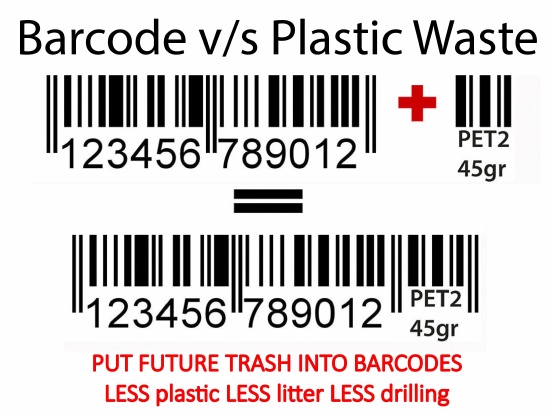
Date: 2025-02-05 Page is: DBtxt003.php txt00010330
Waste Control
Initiative ... Clara Salina
Barcode v/s Plastic Waste: put future trash into barcodes
Burgess COMMENTARY
Peter Burgess

Barcode v/s Plastic Waste: put future trash into barcodes Downloaded (.pdf)
Santiago de Chile The measures implemented by the current recycling model, which are focused on producer responsibility and final consumer awareness, are not enough to prevent the continued accumulation of plastic waste in the oceans. Proof of this, the Mediterranean Sea currently experiencing high levels of plastic pollution even if its coastline meets highly advanced countries on this subject. ÒBarcode v/s Plastic WasteÓ continues forward in the argument, including and controlling a crucial and forgotten player in the current model of consumption: retail or supermarkets . Consumers must continue recycling, but reality shows clear that the potential to decrease plastic waste could not depend only upon consumer awareness. A high percentage of plastic waste passes through supermarkets and, subsequently, the entire distribution channel. While supermarkets do hold responsibility for ENCOURAGING THE USE of plastic and packaging, they also have the potential, although never considered before, to encourage and provide incentives to producers and consumers to reduce their plastic quantities or eliminate it all together.
Following ÒBarcode v/s Plastic WasteÓ, Governments should request supermarkets to be responsible for all plastic recollection associated with products they sell, while Public Administration would maintain the duty of control: the barcode which identifies any item sold, offers the possibility to track all plastics, containers or packaging by simply adding these information into the barcode. Having the package information -weight and material composition- inside the barcode will offer an extremely easy way to obtain the necessary data to apply follow-up control over its recollection.
We would be able to track the recyclable materials per gram through the entire transaction system in real-time, allowing us to review any cash register day by day.
Having the package information (weight and material composition) inside the same barcode will offer an extremely easy way to obtain the necessary data to apply follow-up control over its recollection. (i.e. PET2/45gr. Ð PET5/75gr. Ð etc.) For example, at the end of the day of a given supermarket, we will know that from cash #1 got out: 800gr/PET1, 700gr/PET2, 550gr/PET3 and so on. The requested plastic re-collection criterion will be weight and material and not ÒthatÓ specific packaging, bottle or jar sold by the specified supermarket.
Along with a necessary law, just new software and a new logistic inside supermarkets will be enough to produce the change. This new recycling system can reach the full capacity in three years, requesting 30% of plastic recollection quantity the first year, 60% the second 90% the third.
So, by simply adding future trash into the same barcode already used on any item sold, we would transform millions of negative actions into positive, preventing the loss of tons of raw material with a final reduction of petrol demand.
This information would be provided just as the cash registerÕs account balance appears at the end of the day. Supermarket cash registers are the last control in the commercial process. After that, only individual awareness and the environment are remaining.
ÒBarcode vs Plastic WasteÓ offers an efficient, win-win-win model: a sustainable and dynamic circle, a cradle to cradle controlled process for this currently destructive material. Entire proposal at: https://umayor.academia.edu/ClaraSalina